
The interior of the building gleams white with almost hospital levels of shine and crispness. Cars glitter under the lights, some looking like they’ve literally just rolled off the production line, others stripped back and in the process of being attended to by the large team of surgeon-mechanics. Everywhere chrome sparkles and immaculate paint reflects. The brightness within is the antithesis of so many car workshops, and gives an almost unearthly feeling to the place. Blue-suited mechanics move around the cars, bringing these legends back to full, high performance life. This is classic car nirvana; this is JD Classics.
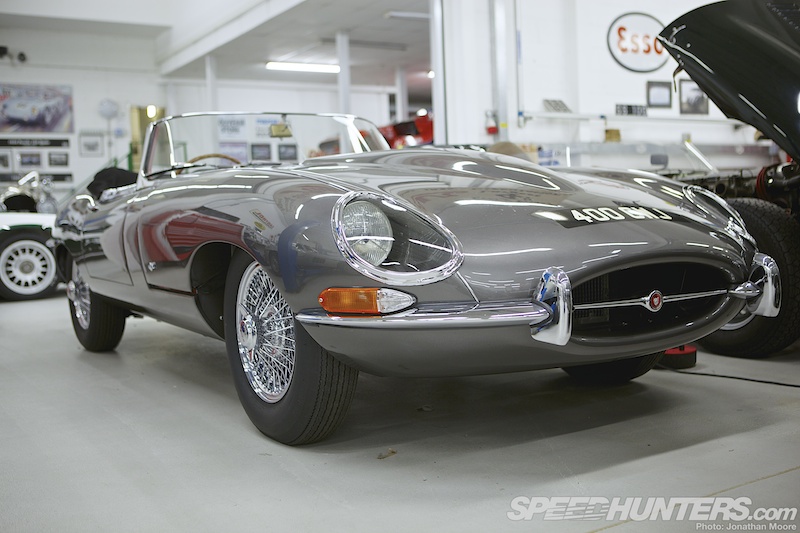
JD Classics have built up an enviable international reputation for the quality and historical respect of their automotive restoration and conservation work – something that started as just a hobby for the owner. As hobbies go, this is now quite a serious pastime.

The company is based on a modest industrial estate in Essex, to the north-east of London – though that modesty is alleviated somewhat when it becomes apparent that the company have expanded to take up a large corner of the whole estate and you see just what the bricks conceal.
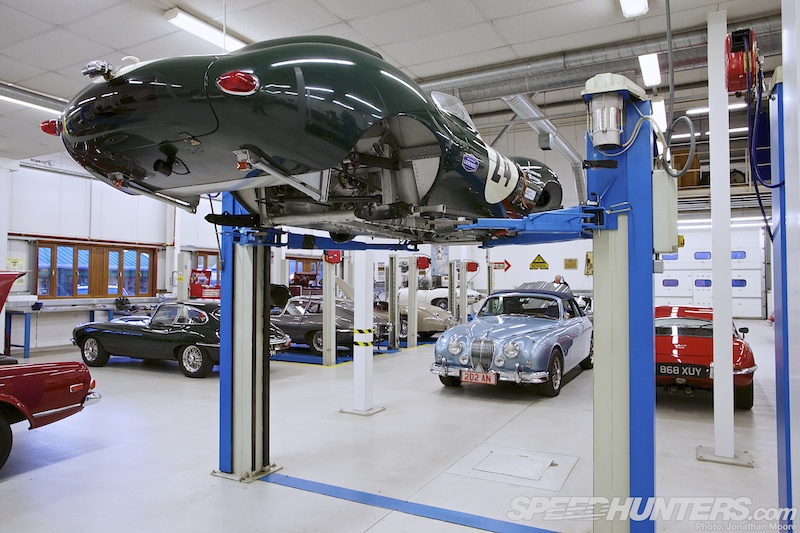
Their facilities extend across four large buildings, comprising workshops, engineering areas – and showrooms. Oh, what showrooms… Major international museums would struggle to rival their contents. We’ll be taking a tour around them in a following article.
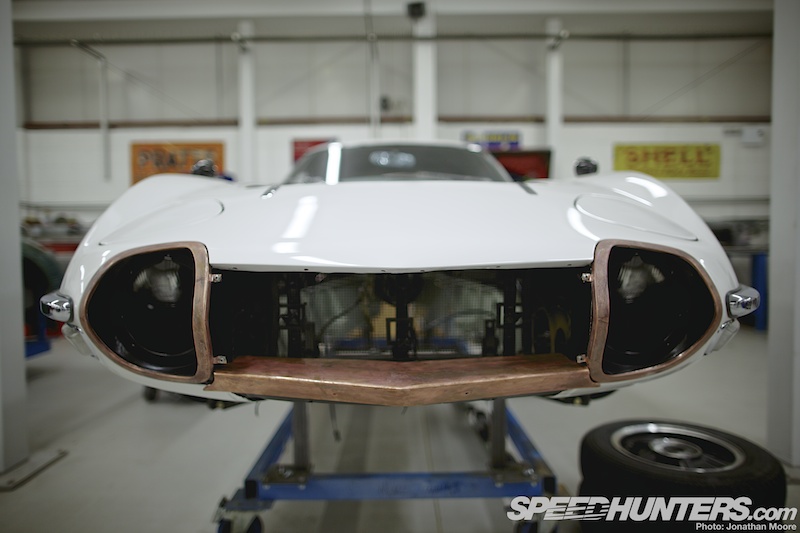
But I’ll start by taking a look around the main workshop area on the ground floor of the largest unit: a place from which I’m still trying to recover my senses.

Entering through the side door, I was confronted with the unmistakable silhouette of a Toyota 2000GT. JD Classics might be known as Jaguar specialists, but their expertise stretches far further afield than just the produce of Coventry.
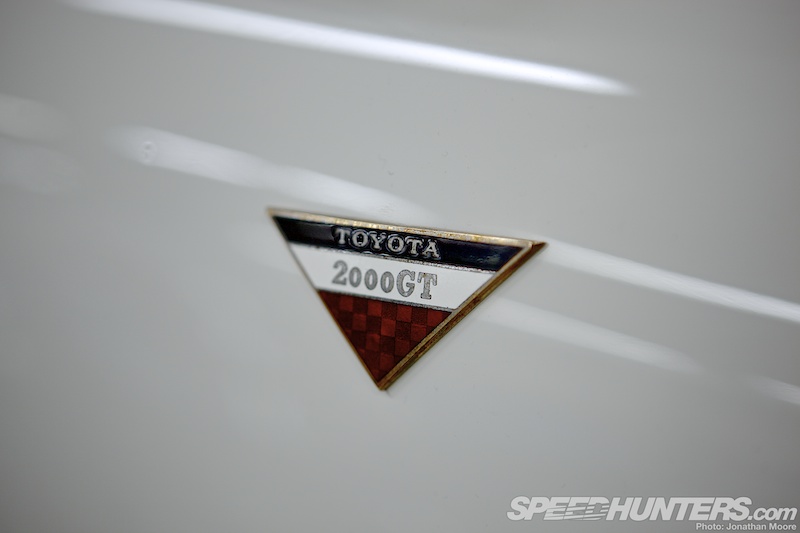
This 2000GT was found in Portugal in original and unrestored condition. It was brought back to the UK and displayed at the Earls Court Motor Show exhibition at the 2011 Goodwood Revival before being delivered into JD Classics’ care to undergo a complete restoration programme.
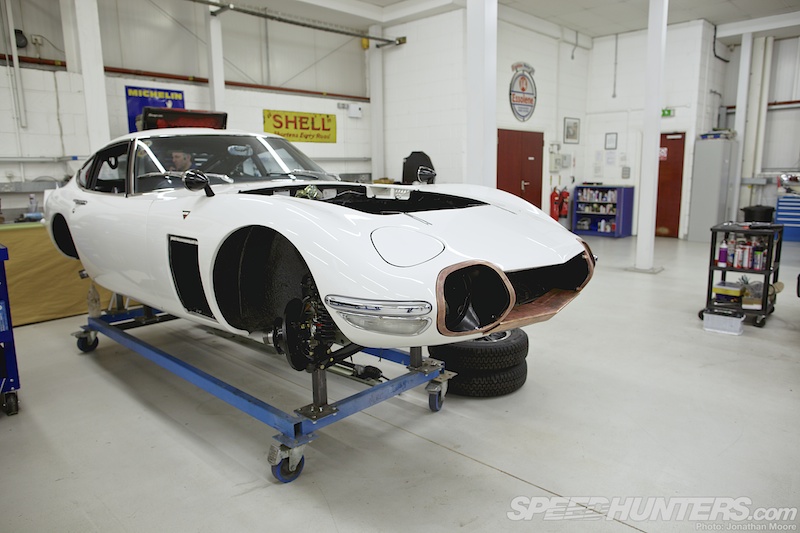
The compact coupé has been completely stripped back, the bodywork repainted and the suspension overhauled and updated.

There’s a lot of chrome on the car, all of it now re-plated and gleaming, the complementing glass sparkling and rubber inserts re-blacked.
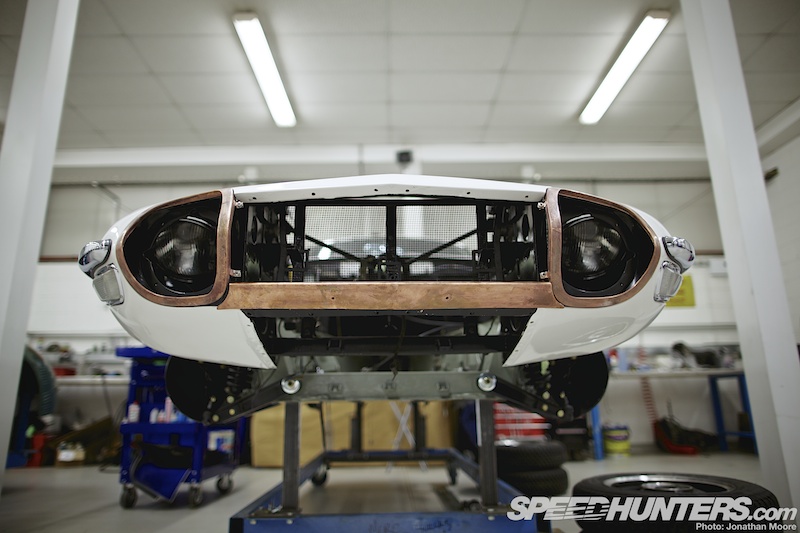
Its two-litre Yamaha straight-six was undergoing a rebuild in the first-floor engine build shop above us – a hole in the workshop ceiling allows a crane to remove and replace engines directly into chassis.
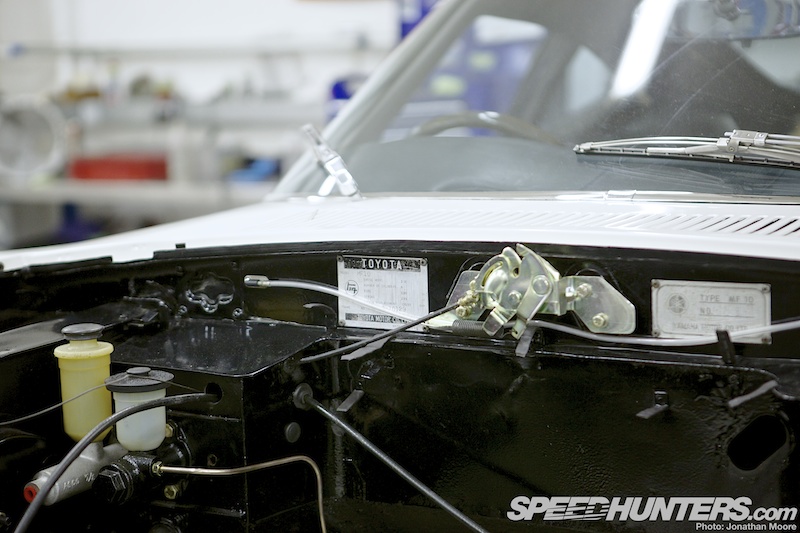
The Yamaha DOHC engine at the heart of the 2000GT also belied its production origin: the same company was responsible for the build of the car, despite the badge on the outside.

The interior was refreshingly original, complete with the rosewood-veneer dashboard and period auto-tune radio: it’s being given a spruce-up and trim will be replaced where necessary, but the cockpit will still have a properly period feel. The grain in the seats and patina on the wheel are part of what makes this car so special.
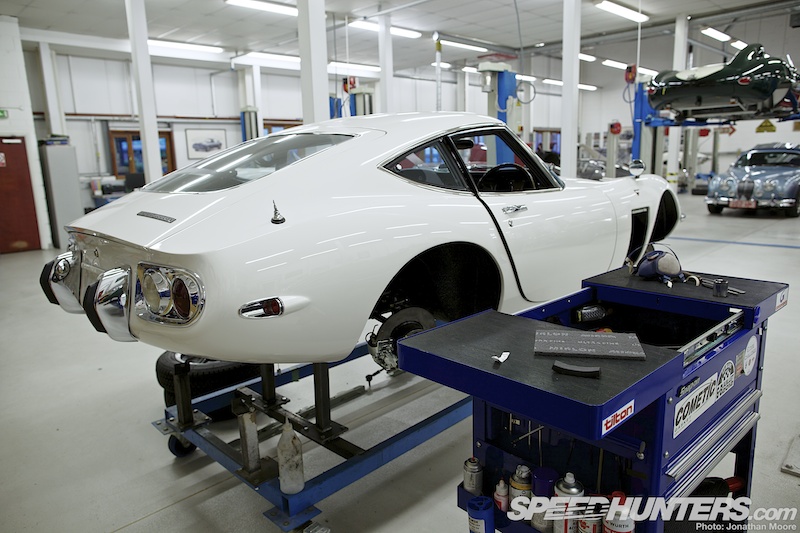
Less than 350 2000GTs were produced during its short production run between 1967 and 1970: long build-times limited the numbers, as did the high sales price which exceeded its contemporary supercar rivals. The 2000GT has a beautiful shape, with echoes of the 250GTO along the bonnet line and hints of E-Type on the rear deck, but it has its own unique style and poise which was decidedly modern for the time.
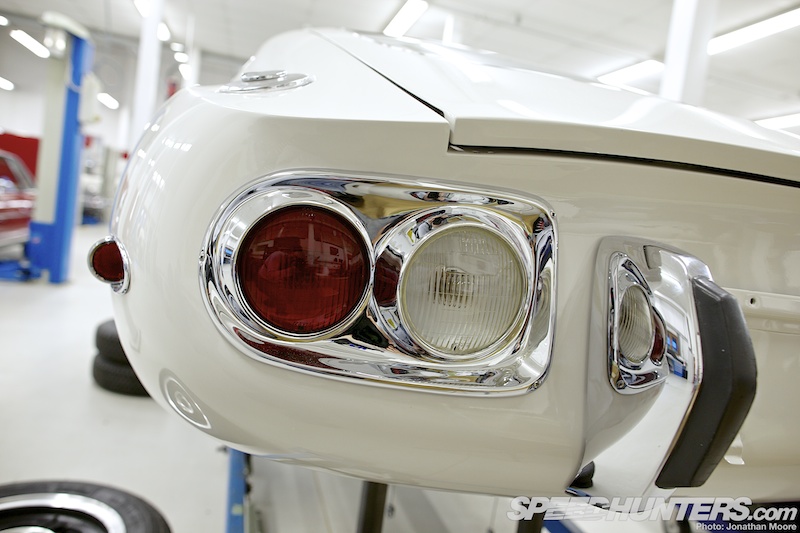
With good reason JD Classics claim this is one of the best, if not the best, original example of a 2000GT in the world. With the engine nearly complete, the restoration project is nearing its end and this 2000GT will soon be back in the hands of its very lucky new owner.
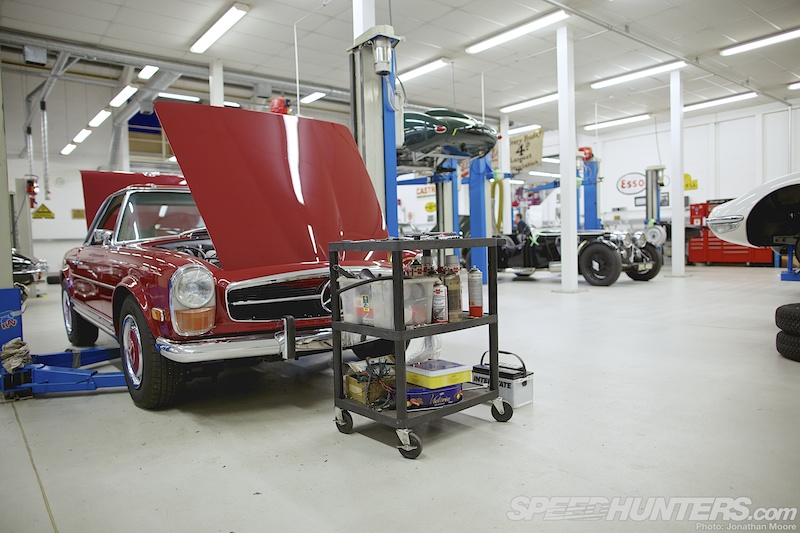
Next to the Toyota was a Mercedes-Benz 280SL – a removable ‘Pagoda’ concave hardtop version in the style of the California Coupé 250SL.
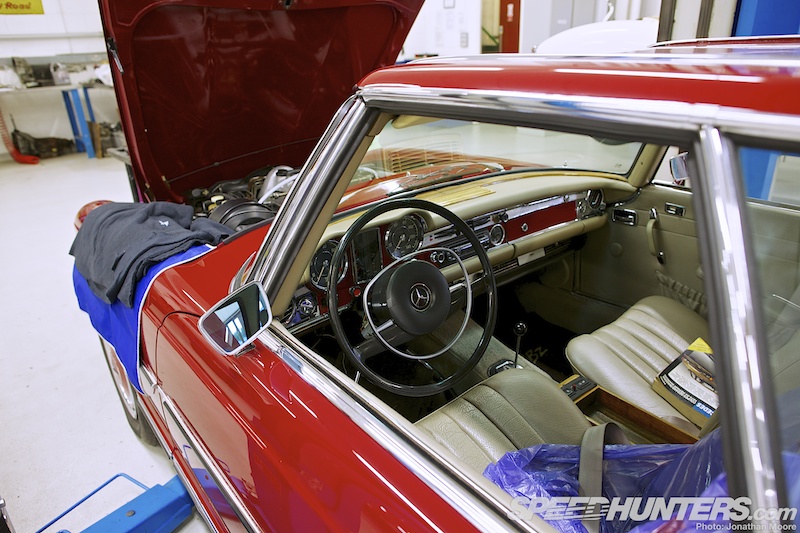
The driving position in a W113 always looks like a refined place to be: perfect for gentle cruises down a Mediterranean coastal road or a Californian boulevard.
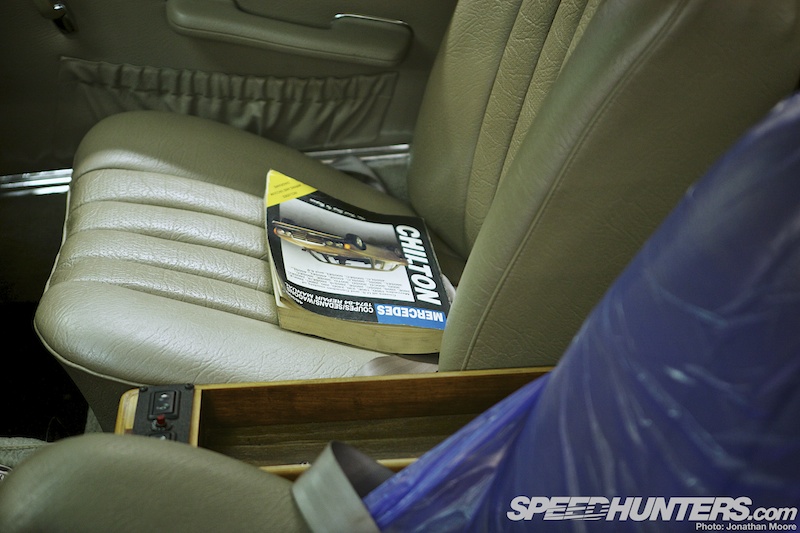
Working on these kind of cars requires a lot of reference to contemporary sources, and handbooks and manuals are absolutely essential. The company keep an entire library of material to hand to help when working on the myriad of cars that come through their doors.
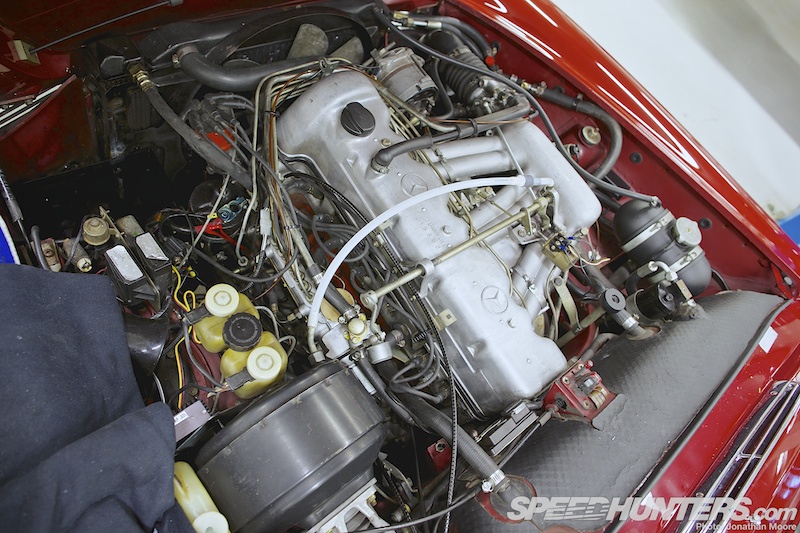
The Merc’s bonnet contained a maze of wiring wrapped around the 2.8-litre inline six – this final variant of the W113 model is regarded as the sensible option, power-wise, following the weaker 2.3 and 2.5-litre variants.
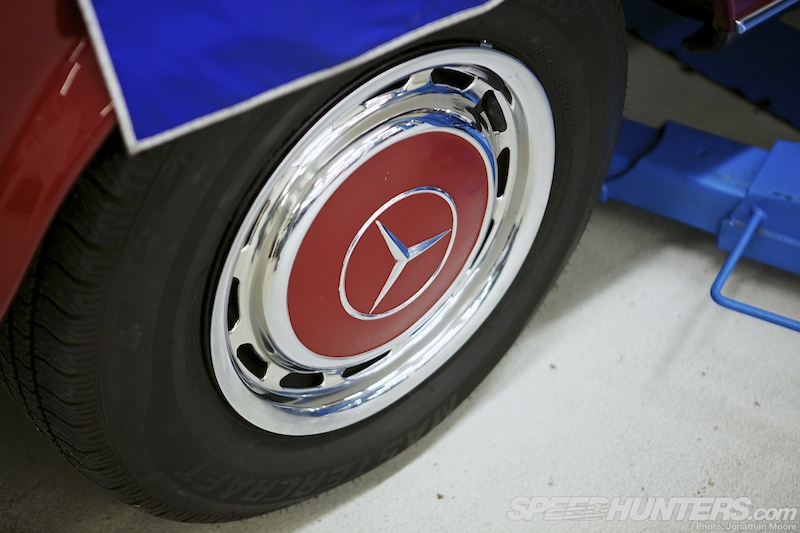
The one-piece wheel covers have an art deco style to them: colour coded and unfussy, they are the perfect complement to the 280SL’s understated elegance.
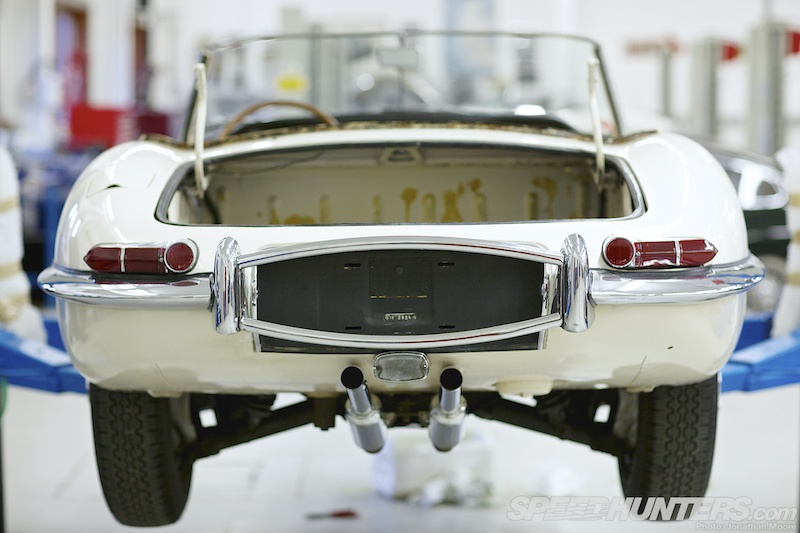
An E-Type roadster was undergoing some major reconstruction: it was shorn of all of its interior trim.
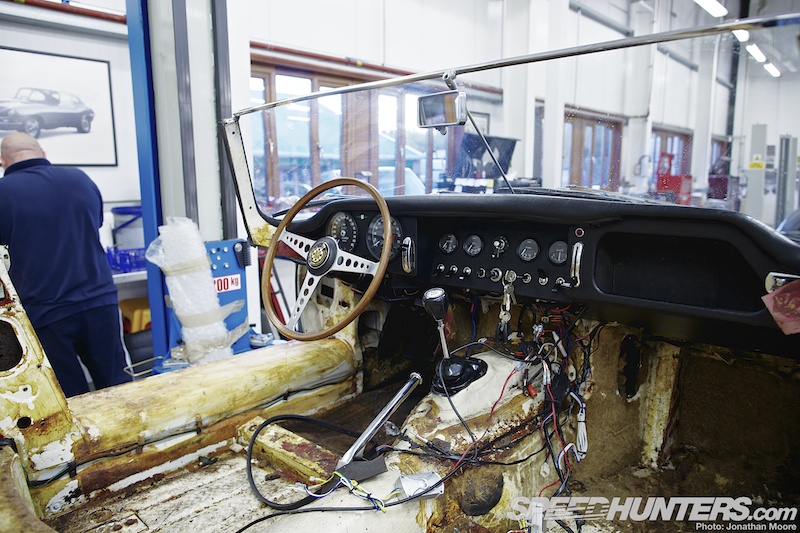
The cockpit of this left-hooker had been completely stripped out and looked like it was undergoing some major rewiring.
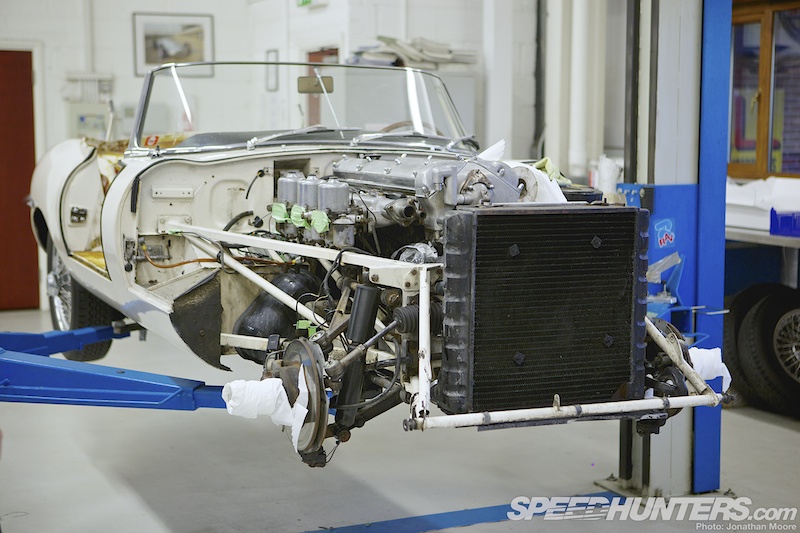
With the front bodywork removed it gave a great opportunity to see the engine and radiator set-up normally obscured by the long nose bodywork.
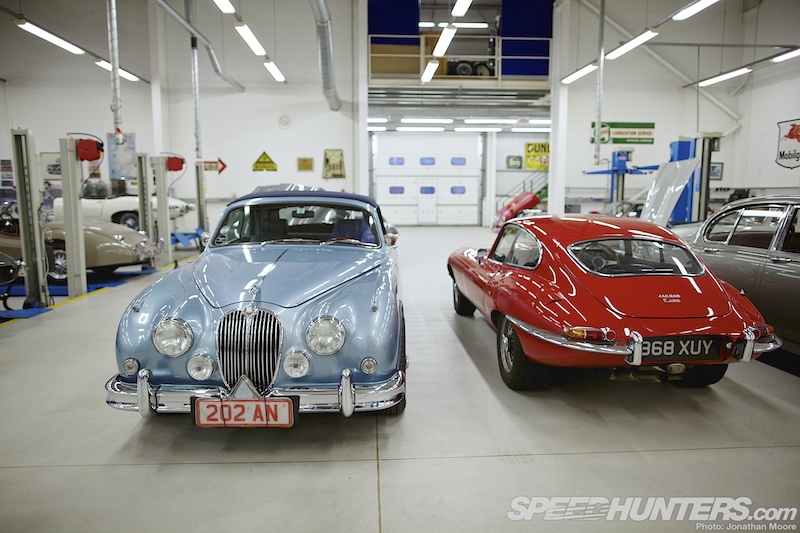
Customer vehicles, cars that would be offered for sale and ‘keepers’ undergoing maintenance sat side by side in the workshop, providing a living visual history of the Jaguar marque.
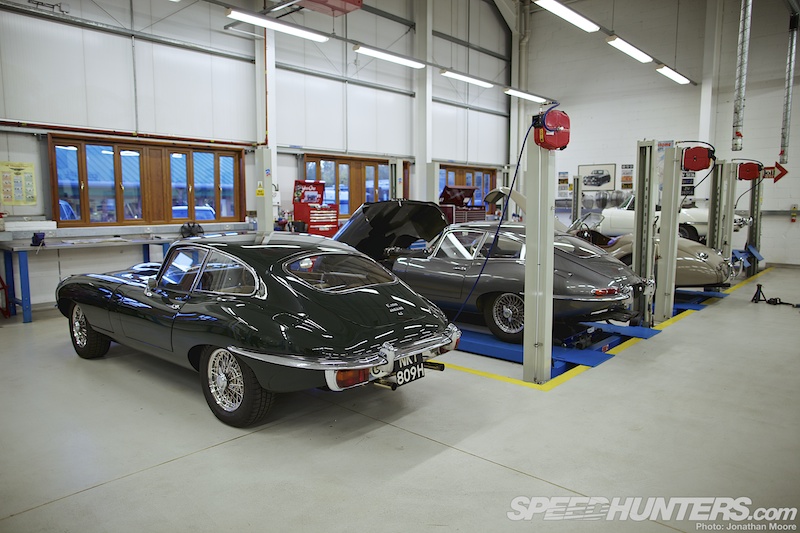
There was no shortage of further E-Type examples in the workshop – but tiring of E-Types is effectively the same as saying you have tired of life, to paraphrase Samuel Johnson. Here we have a 4.2 Fixed Head next to a Series 3 V12, an XK and a Series 2 roadster.

XK Jaguars are easy to overlook amongst all the anniversary fervour over E-Types: the older model was the stalwart of the firm during the 1950s and led to Jaguar’s post-war renaissance. Apart from admiring the beautiful finish on this XK120 body, it’s the little details around it that stand out, from the Jaguar Racing protective mat to the period advertising signs around the walls.
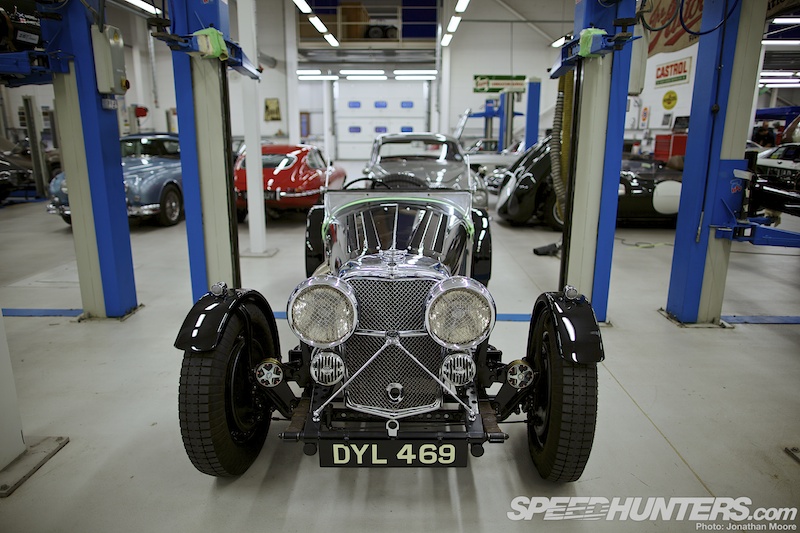
Going further back in time, this SS100 roaster sat in the centre of the workshop, showing off its latitudinally-mounted Hartford dial-controlled friction dampers inboard of each wheel: most of the pre-war performance cars used this system.

The cars might be old and some of the techniques required traditional by necessity, but the equipment employed is all absolutely cutting edge. I’ve seen few places with as many bays, lifts and general capacity.
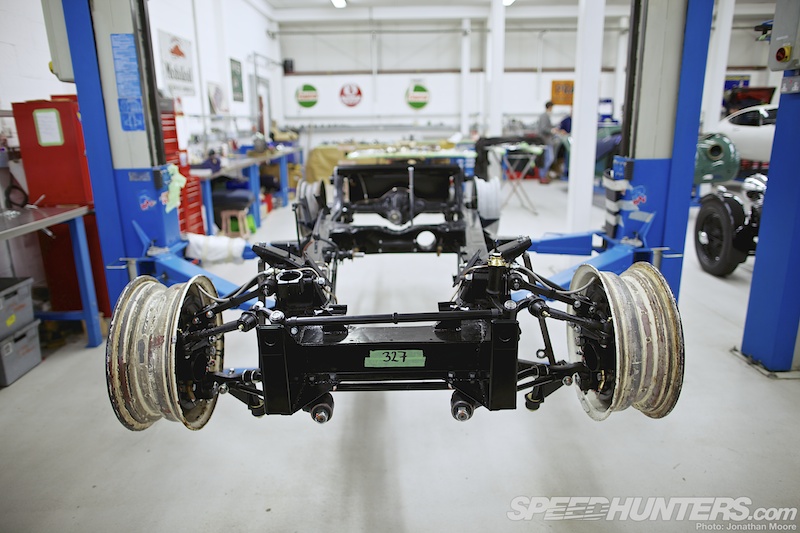
One of the company’s unique abilities is their complete in-house manufacturing ability: they can take a bare chassis and remanufacture bespoke parts as necessary: suspension components, bodywork, engines components – anything! This XK120 chassis matches up with the body on the rig alongside the Toyota: it was a successful competition car in period, and is likely to be the same in the modern era once rebuilt.
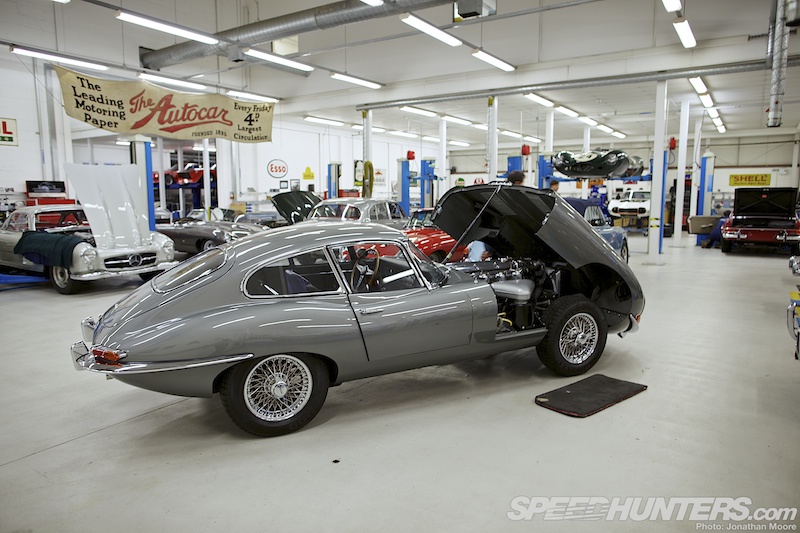
Although restoration and conservation is their forte, another option is available. Say you are lucky enough to own a classic car but want to make it into a more practical, modern daily driver: JD Classic offer a Sports Upgrade service where they will sympathetically improve the car’s underpinnings and interior. This provides you with a pristine classic on the outside, but with whatever mod-cons you require on the inside and a modern ride underneath.
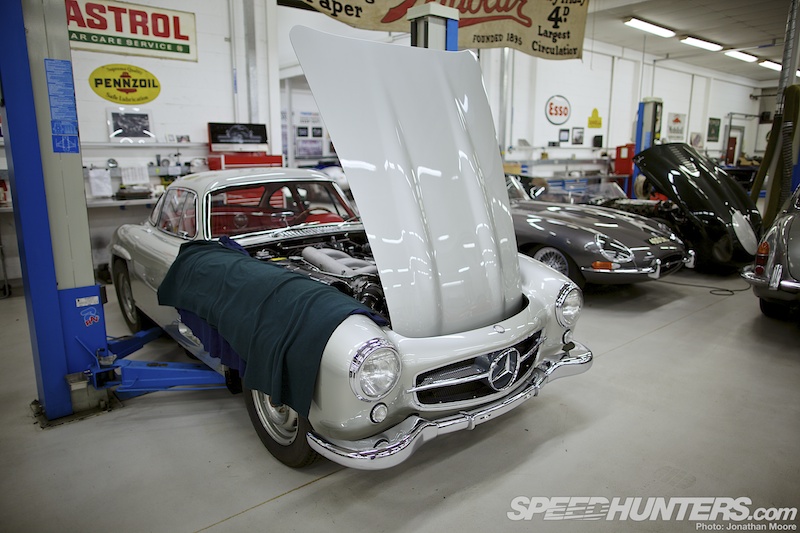
Moving – ever slowly – in orbit around the workshop, the next car to pause at was this Mercedes-Benz 300SL Gullwing, in for a service.
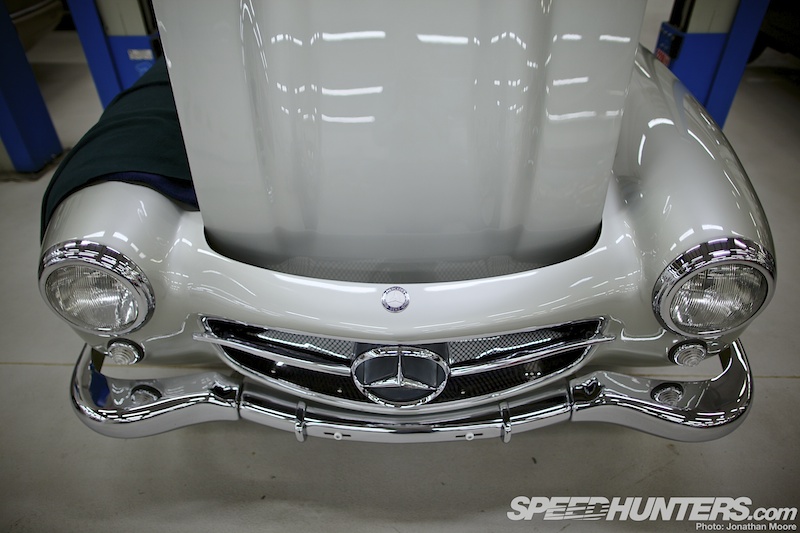
The flowing lines of the Gullwing’s frontal area work from any angle, especially with the signature horizontal chrome cut-line across the grill – a detail that is also then carried across to the side vents.
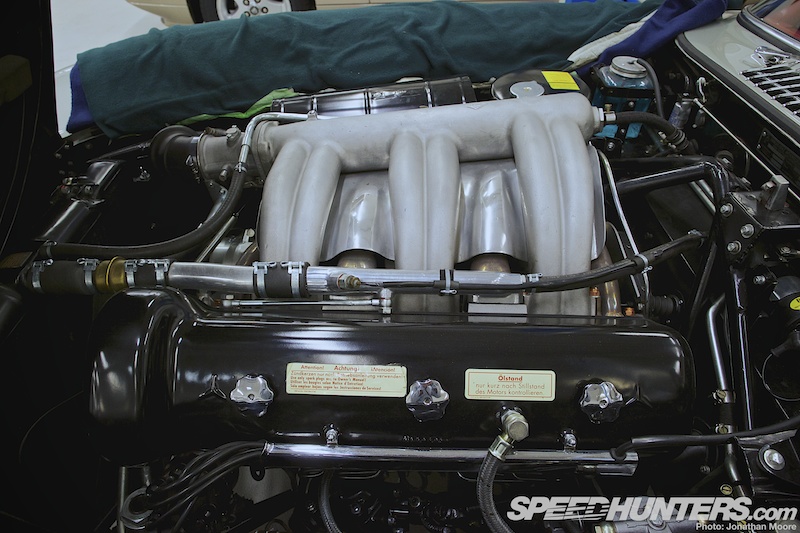
The engine bay, containing the three-litre straight-six, has quite a modern feel, and the angle of the engine mounting was clear to see – it was canted to the left to allow for a lower bonnet-line.
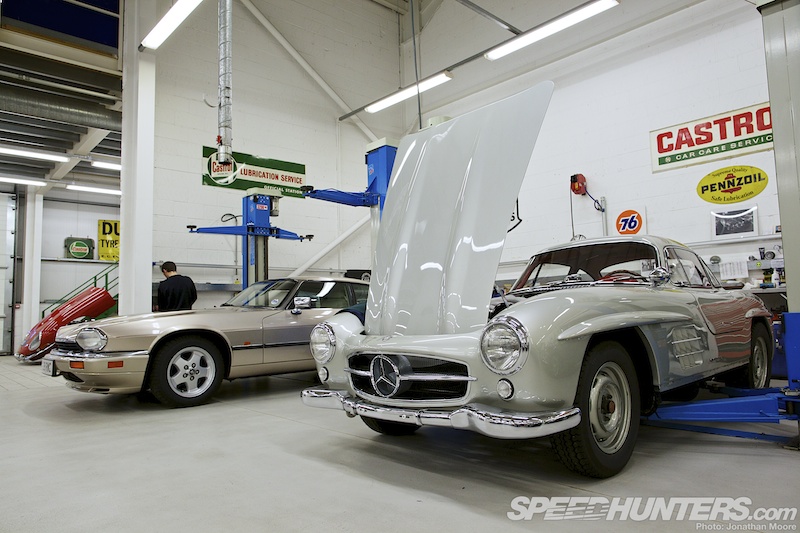
Next to the Gullwing was a ’90s XJS, and then through the opening the MOT bays.
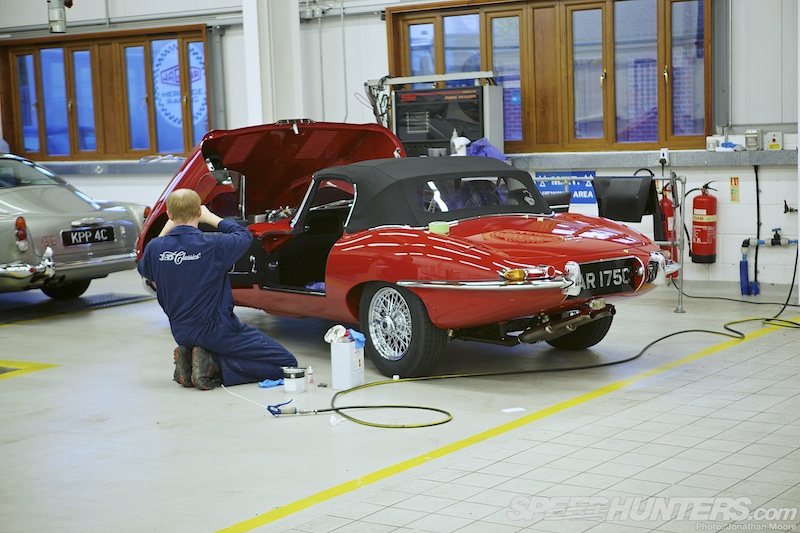
Predictably the technical checks area was unlike any most you’ll ever see, in terms of both presentation and contents..
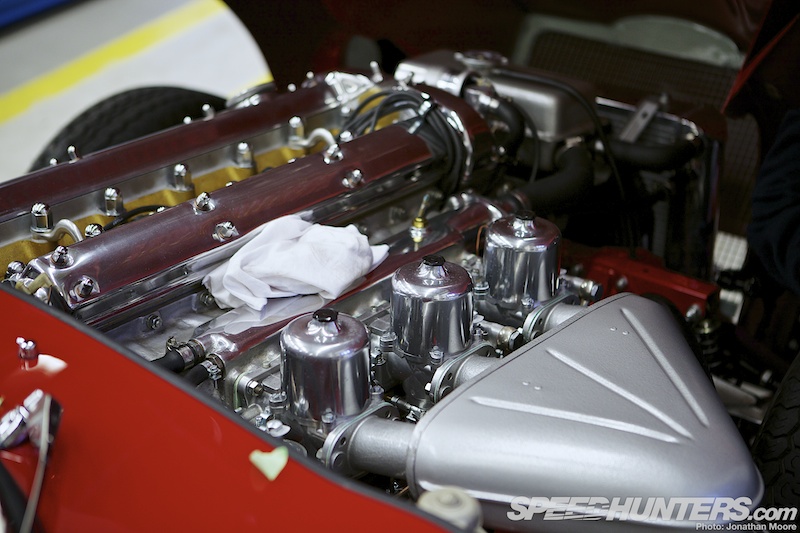
This 4.2 had a showroom-condition engine bay that had to be seen to be believed: it was all too easy to believe that you’ve been transported 50 years back in time to when these cars were fresh off the production line. Spotless!
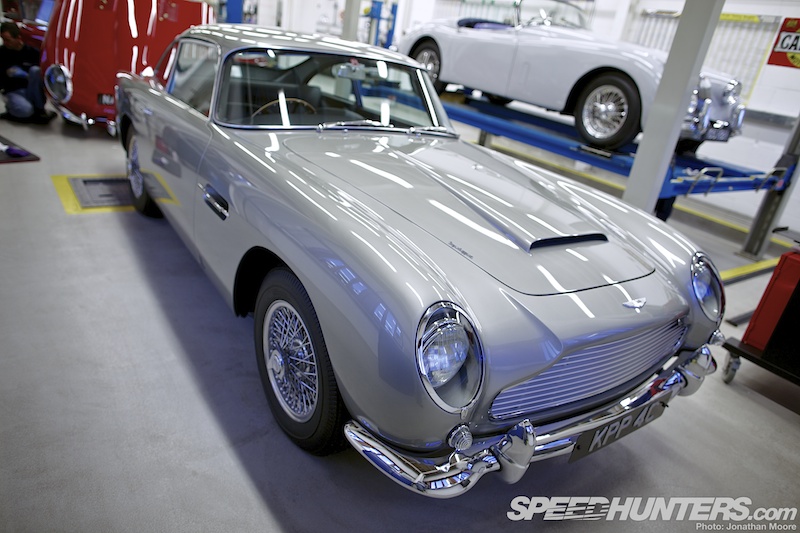
In front of the E-type was this Aston Martin DB5, which was all very appropriate just having seen the latest Bond film the previous weekend…

The Vantage badge denoted this as the high performance version of the coupé: 315hp is on tap from the four-litre engine, upgrade with triple Weber carbs and revised camshafts.
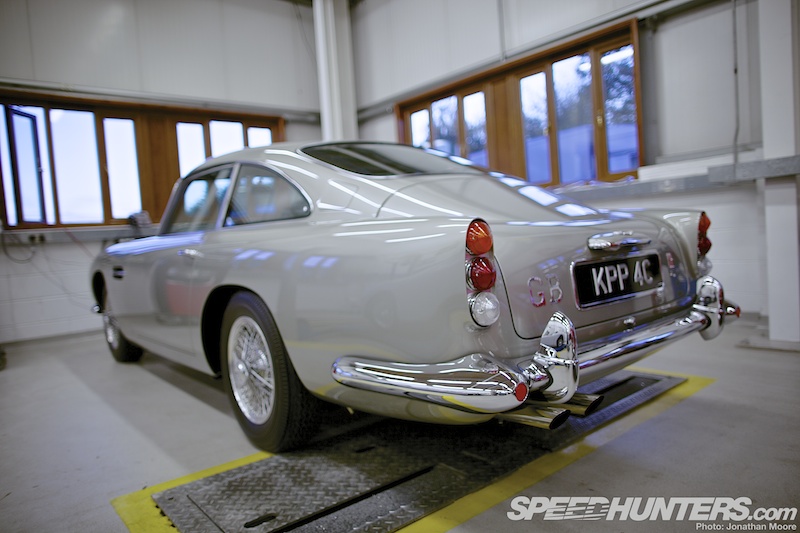
The Vantage is achingly beautiful; it’s also exceedingly rare, which is why it was even more of a privilege to see one in the flesh.
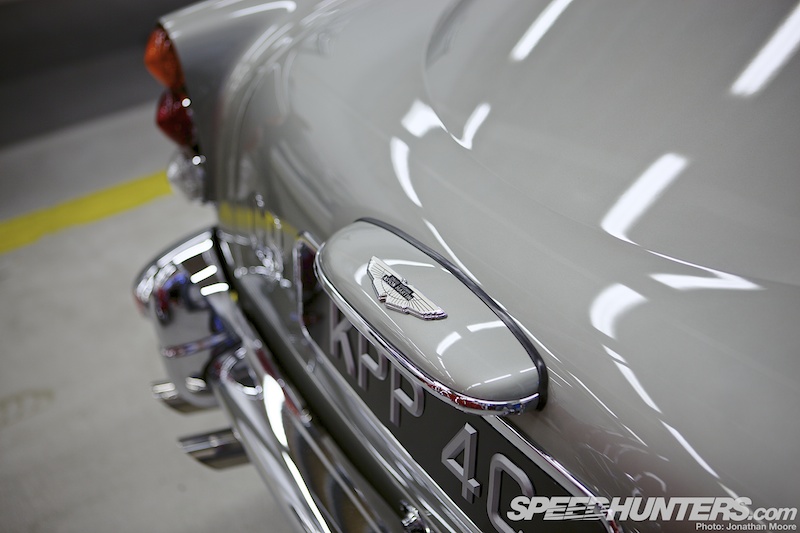
The winged badges on modern Astons no longer carry the name of the firm’s legendary owner from the ’50s to the ’70s, David Brown, whose name is on the original emblem of this DB5, but his name lives on in the prefix given to even modern Aston sportscars.
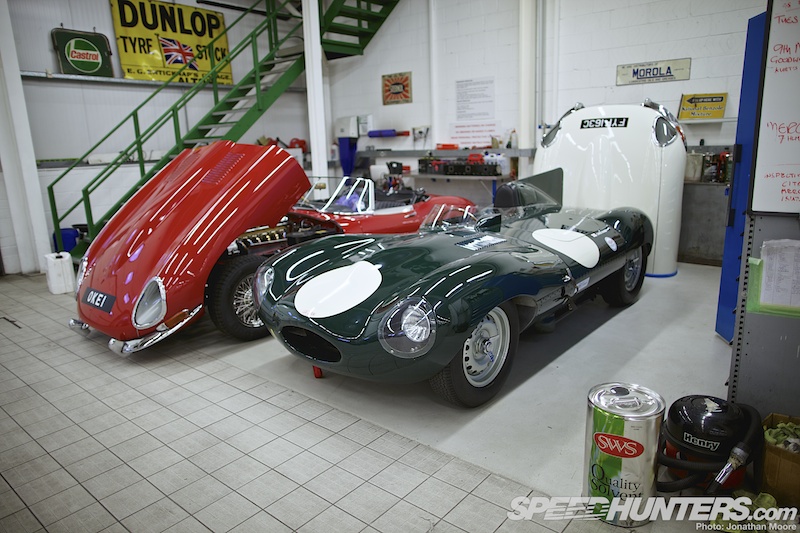
Along with the genuine short-nose racing D-Type on the lift, a second sat awaiting attention in another bay…
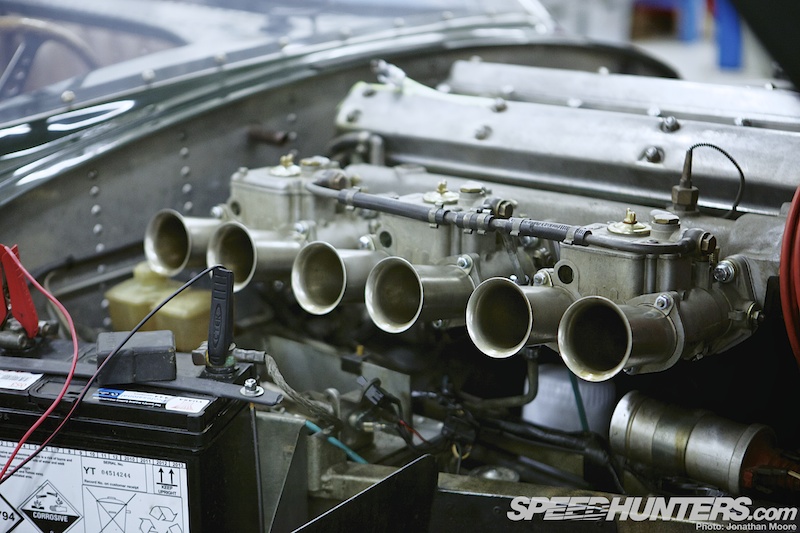
…and a third was parked with its bonnet up by the entrance to the racing team preparation area, allowing a great view of its straight-six.
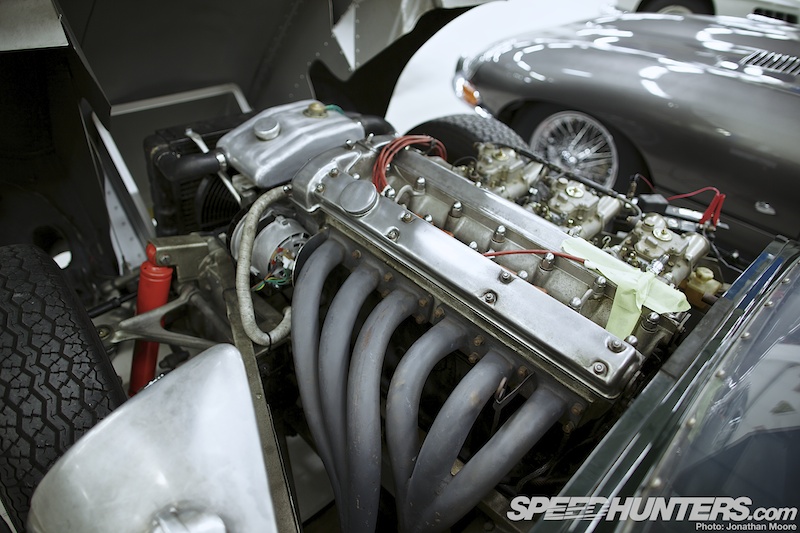
Like the Gullwing, the D-Type had its engine canted over slightly to reduce the frontal area. The XK6 is still regarded as one of the most remarkable engines ever made.
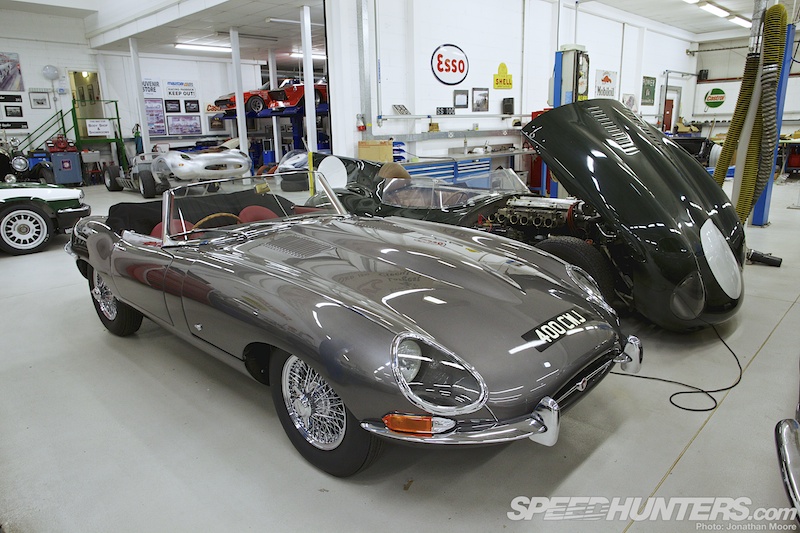
Next up we’ll move through into the race support area, which contained a number of non-Jaguar surprises alongside Jaguar race-cars spanning 40 years of the Big Cat in motorsport.
Jonathan Moore

Photo by Jonathan Moore

Photo by Jonathan Moore

Photo by Jonathan Moore

Photo by Jonathan Moore

Photo by Jonathan Moore

Photo by Jonathan Moore

Photo by Jonathan Moore

Photo by Jonathan Moore

Photo by Jonathan Moore

Photo by Jonathan Moore








The 2000GT and the E-type. Chapter one, line one of the automotive design hand book.
My dream career would be to work there, or someplace very much like there. Absolutely incredible.
*goes off to put more lights in his garage, seal the floor with white top coat, and clean everything sixteen times*
What a sight! No 911s just pure Britishness. The desgins are outstanding and work on such a level needs to be accredited to the highest! Thanks for preserving these machines!
Heaven on my computer screen... So close, yet so far...
Heaven on my computer screen... So close, yet so far...
What's the car in the fourth picture??? It's absolutely sublime looking!
What's the car in the fourth picture??? It's absolutely sublime looking!
@AlejandroRamirez it is a D type of some sort
@AlejandroRamirez it is a D type of some sort
I remember seeing the car somewhere before but I never knew it was so special. Thanks to Speedhunters, I have a new retro love; the 2000GT. :] I love this site!
I remember seeing the car somewhere before but I never knew it was so special. Thanks to Speedhunters, I have a new retro love; the 2000GT. :] I love this site!
Wow this place is epic. Nice post.
@KH15 Yes, in my opinion those are one of the best automotive design; they're just absolutely gorgeous.
Love, 200GT, D Type Jag and the DB5. Just cloud nine for me. Want to visit this place one day.
Take a look at Makella Auto Tuning in Finland too... Those guys are truly amazing!
There has to say, just enjoy without moderation! Fantastic!
droool
the front air dam and headlight surrounds on the 2000GT... is that brass?
...or may be copper?
i'm guessing they've re-made the chrome bits from scratch and they are fitting them to the body now before they send them out to get chromed.
it looks like they've re-made the trim from scratch and are test fitting it to the car...
once that's done, it'll go out and get chromed.
@ericbauer You use copper as a build up to block out trim before chrome. They copper plate it, block it out to get it straight, wave-less, and ready for chrome, then it is typically nickle and chrome plated.
@ericbauer or it could be the first step in the re-plating process. I believe that chromium plating requires an etch coat (the copper).
yes @ian, that's what i was getting at...
@LastPilot the 2000GT was on a Top Gear special on James Bond cars last week. I forget which film this car was in. I don't recal ever seeing or hearing about this car before (I'm quite young though) which is a shame, apparently they fetch big figures (£250'000).
The 2000GT is by far the most beautiful car ever. A car you must see in person. Smaller then I thought. Being 6'4" . I couldnt drive it. Let alone sit in the passenger seat. My friend allows me to come over and visit his in the garage. Many hours just sitting in silence sipping a beer looking at it.....
What a nice change after enduring all that SEMA rubbish
I see a slight resemblance between the rear of that 2000GT and the rear of the new GT86.............
Glen Quagmire
That's why they built a special convertible version for the James Bond movie "You only live twice", Sean Connery did not fit in the car.